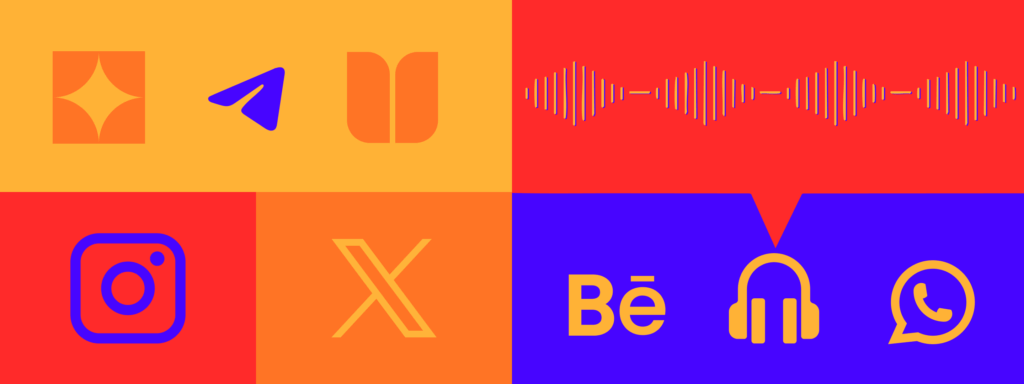Harnessing the Power of Social Listening: How Brands Are Using Data-Driven Insights to Shape Content Strategy
May 08, 2025 ● 12 Mins Read

Table of Contents
Introduction
In a digital ecosystem overflowing with noise, understanding your audience has never been more crucial. Social listening has emerged as a game-changer, allowing brands to tap into real-time data-driven insights and adapt their content strategy accordingly. This blog explores how brands are leveraging social listening tools to craft compelling content that resonates with audiences, anticipate trends, and stay ahead in an ever-evolving market.

What Is Social Listening?
Social listening goes beyond merely tracking mentions or counting likes. It’s the strategic practice of monitoring social media channels for mentions of your brand, competitors, industry-related keywords, and any topic that provides insight into your audience’s perceptions and preferences. Unlike social media monitoring, which focuses on metrics and engagement, social listening seeks to understand the underlying sentiment and trends that drive user behavior.
The Impact of Social Listening on Content Strategy
Uncovering Audience Sentiment
At the heart of any successful content strategy lies a profound understanding of your audience’s needs, preferences, and emotional triggers. Social listening helps brands detect the “sentiment behind online conversations”, giving a clear picture of how audiences feel about a product, service, or industry trend.
Techniques for brands:
- Use tools like “Brandwatch, Sprinklr, or Talkwalker ” to conduct sentiment analysis.
- Analyze customer sentiment data to identify content gaps or areas that need improvement.
- Use insights to tweak the tone, language, and messaging of content to match the audience’s emotions.
Trendspotting and Predictive Analysis
Social listening allows brands to detect emerging trends before they gain widespread traction. By keeping an eye on industry-related keywords and hashtags, brands can identify “trending topics” early and create content that capitalizes on these conversations.
Techniques for brands:
- Track trending hashtags and keywords using tools like “BuzzSumo or Hootsuite Insights”.
- Monitor competitors’ content performance to spot gaps or opportunities.
- Use predictive analysis to forecast future trends and plan a content calendar accordingly.
Competitor Benchmarking
Social listening provides a wealth of data on how competitors are engaging their audience. By analyzing competitor content strategies, brands can “benchmark their own performance”, identify successful tactics, and learn from competitors’ mistakes.
Techniques for brands:
- Monitor competitors’ social media mentions, engagement rates, and content types.
- Analyze the sentiment of customer feedback on competitor products or services.
- Adjust content strategy based on competitor analysis, emphasizing unique strengths.
How Data-Driven Insights Shape Content Strategy
Creating Hyper-Targeted Content
One of the greatest benefits of social listening is the ability to drill down into audience segments and tailor content that speaks directly to their specific needs. This level of personalization drives deeper engagement and “enhances audience relevance”.
Techniques for brands:
- Use segmentation data to create content tailored to different demographics, locations, or interests.
- Analyze user comments and feedback to identify common pain points and address them in content.
- Leverage social listening to inform email marketing campaigns with personalized content.
Content Ideation and Inspiration
Social listening can serve as a constant source of inspiration for content creation. By observing what users are discussing, sharing, and engaging with, brands can “generate fresh content ideas” that align with current trends and audience interests.
Techniques for brands:
- Identify frequently asked questions or recurring themes in social conversations.
- Use tools like “Reddit or Quora” to find trending discussions related to your niche.
- Develop content that answers popular questions, solves problems, or provides thought leadership on trending topics.
Optimizing Content for Maximum Engagement
Social listening provides insights into the type of content that drives the highest levels of engagement, allowing brands to optimize their strategy accordingly. This includes the preferred “content format, tone, posting times, and channels” that generate the most interaction.
Techniques for brands:
- Use analytics tools to track the performance of various content formats (e.g., videos, infographics, articles).
- Experiment with different types of content and A/B test to see what resonates best.
- Analyze engagement metrics like shares, comments, and reactions to refine content strategy.
Tools for Effective Social Listening
AI-Driven Social Listening Tools:
The integration of AI and machine learning has revolutionized social listening, enabling brands to process massive amounts of data quickly and accurately. AI-driven tools can perform tasks like “sentiment analysis, trend identification, and predictive insights”.
Key tools:
- Sprout Social: AI-powered insights for engagement metrics and sentiment analysis.
- Talkwalker: Advanced AI algorithms for tracking keywords, analyzing sentiment, and identifying trends.
- Mention: An intuitive tool that uses AI to filter mentions and identify actionable insights.
Social Listening for Multichannel Analysis:
Brands need a holistic view of their digital landscape, which requires analyzing conversations across multiple channels, social media platforms, forums, review sites, and blogs. Multichannel analysis gives a broader perspective on audience behavior and content impact.
Key tools:
Brandwatch : Tracks brand mentions and sentiment across social platforms, blogs, and forums.
Hootsuite Insights : Provides a comprehensive analysis of conversations across social media, helping brands to strategize more effectively.
BuzzSumo : Allows brands to monitor content performance across multiple platforms, identifying which formats and topics gain the most traction.
Best Practices for Using Social Listening to Shape Content
Real-Time Engagement and Crisis Management
Social listening can alert brands to potential crises before they escalate. Identifying negative feedback or trending complaints allows brands to “address concerns quickly”, mitigating the damage to their reputation.
Techniques for brands:
- Set up alerts for negative sentiment spikes and engage promptly to resolve issues.
- Monitor competitor crises to learn how to handle similar situations.
- Develop content that addresses common complaints or customer concerns to preemptively manage crises.
Building Authentic Relationships
Social listening helps brands understand what drives their audience’s loyalty and advocacy. This enables brands to create content that fosters genuine relationships and a sense of community.
Techniques for brands:
- Highlight user-generated content and showcase loyal customers or followers.
- Engage with brand advocates and influencers to amplify content reach.
- Use social listening insights to understand and respond to brand mentions in a personalized way.
Leveraging Feedback for Continuous Improvement
Audience feedback collected through social listening provides invaluable data for ongoing content improvement. Brands can analyze which types of content receive the best and worst responses and “adapt strategies accordingly”.
Techniques for brands:
- Conduct regular audits of feedback data to refine content strategy.
- Use feedback insights to develop FAQs, educational guides, and customer support content.
- Iterate on successful content pieces by creating similar, but updated, versions.
These security measures protect against potential data breaches, downtime, and other risks, ensuring that logistics operations remain uninterrupted and secure.
Conclusion
Social listening has transformed the way brands approach content strategy. By harnessing data-driven insights, brands can create hyper-relevant content, build authentic relationships, and anticipate market shifts. As social media platforms and digital channels continue to evolve, the brands that embrace social listening will be the ones leading the conversation, shaping industry trends, and fostering deeper connections with their audiences. Whether you are looking to optimize content, anticipate trends, or understand audience sentiment, social listening is a powerful tool that should be at the core of every brand’s digital strategy.
Social media has become my creative outlet and professional playground, where I get to shape narratives, build engagement, and explore digital trends. Away from the screen, I turn to books to unwind, painting to express, and tennis to stay active.

Mehak Farheen
Social Media Associate




